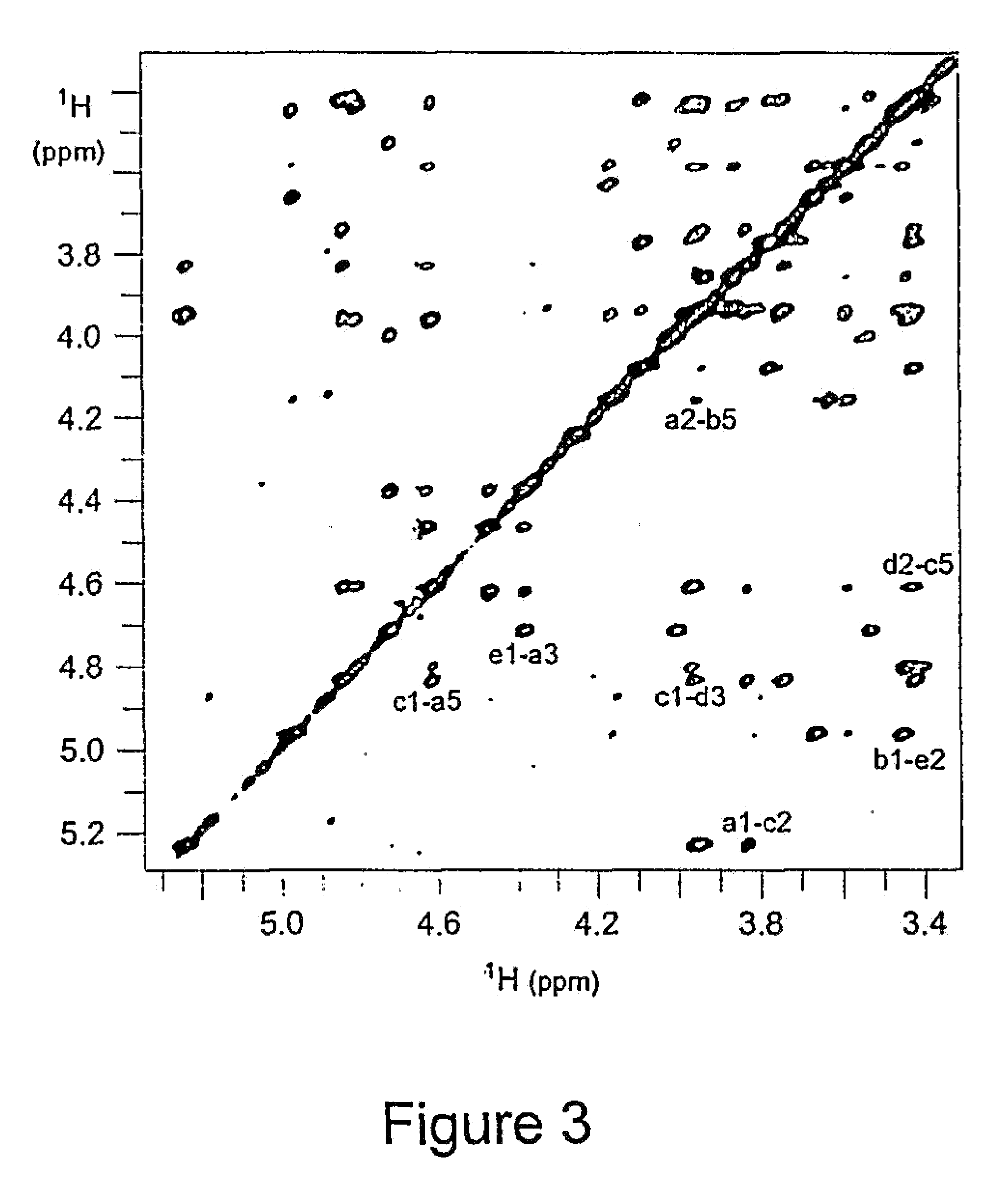Use of zwitterionic polysaccharides for the specific modulation of immune processes
a technology of zwitterionic polysaccharides and immune processes, applied in the field of biotechnology, three-dimensional molecular structure determination, rational drug design, etc., can solve the problems of considerable morbidity and mortality, and achieve the effect of suppressing the production of antigen-specific immunoglobulin g (igg) antibodies and altering immune cell function
- Summary
- Abstract
- Description
- Claims
- Application Information
AI Technical Summary
Benefits of technology
Problems solved by technology
Method used
Image
Examples
example 1
PS A2
[0206]Bacterial strain and isolation of capsular polysaccharides of B. fragilis strain 638R. B. fragilis strain 638R (Privitera G et al. (1979) J Infect Dis 139:97-101) was maintained in peptone-yeast broth at −80° C. The production of CPC was enhanced and the glycogen content in extracts was minimized by serial passage of bacteria five times through rat spleens (male Wistar rats, 175-200 g, Charles River Laboratories, Wilmington, Mass.). Kasper D L et al. (1980) J Infect Dis 142:750-6. Initially, 108 organisms in PBS were injected intraperitoneally into a rat and recovered 24 h later by dispersing the spleen. The organisms were cultured overnight anaerobically on Brucella agar with 5% sheep blood (PML Microbiologicals, Mississauga, ON, Canada). The inoculation and recovery processes were repeated. Enhanced production of capsule was confirmed by electron microscopy studies with polyvalent antiserum to whole bacteria. After the passages, bacteria were grown anaerobically in a 1...
example 2
Sp1
[0238]S. pneumoniae type 1 polysaccharide (Sp1) (Tzianabos A O et al. (1993) Science 262:416-9) shares the same T-cell activity and the consequent ability to regulate bacterial abscess formation as tested in rat model of intraabdominal abscesses (Tzianabos A O et al (2000) J Biol Chem 275:6733-40; Lindberg B et al (1980) Carbohydr Res 78:111-7). Sp1 is a linear polymer consisting of trisaccharide repeating units, containing galacturonic acid (GalA, residues a and c), 2-acetoamide-4-amino-2,4,6-trideoxygalactose (Sug, residue b) with a sequence of →3)-α-D-GalA(a)-(1→3)-α-D-Sug(b)-(1→4)-α-D-GalA(c)-(1→(17, 22). Each repeating unit of Sp1 contains one positively charged amine and two negatively charged carboxyl groups.
[0239]Purification of Sp1. Crude PS extract from type 1 S. pneumoniae was purchased from the American Type Culture Collection (Atlanta, Ga.). A 20 mg sample of the crude material was dissolved in 1.5 mL of 2M NaOH and heated at 80° C. for 3 hrs in order to degrade the ...
PUM
| Property | Measurement | Unit |
|---|---|---|
| wet weight | aaaaa | aaaaa |
| pH | aaaaa | aaaaa |
| dry weight | aaaaa | aaaaa |
Abstract
Description
Claims
Application Information
 Login to View More
Login to View More - R&D
- Intellectual Property
- Life Sciences
- Materials
- Tech Scout
- Unparalleled Data Quality
- Higher Quality Content
- 60% Fewer Hallucinations
Browse by: Latest US Patents, China's latest patents, Technical Efficacy Thesaurus, Application Domain, Technology Topic, Popular Technical Reports.
© 2025 PatSnap. All rights reserved.Legal|Privacy policy|Modern Slavery Act Transparency Statement|Sitemap|About US| Contact US: help@patsnap.com



